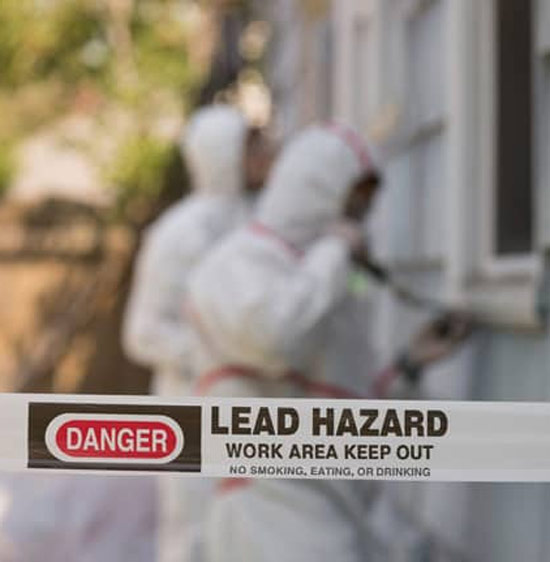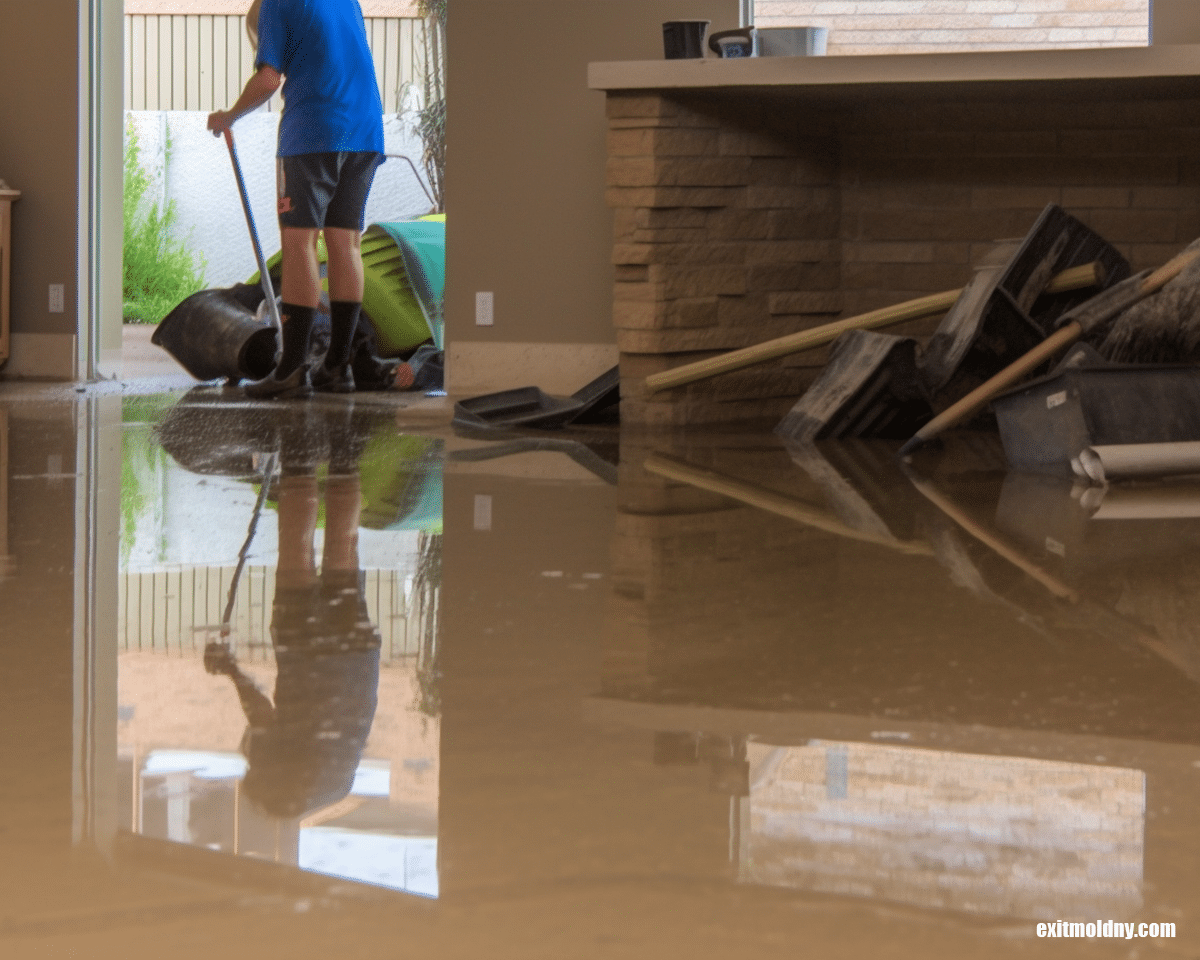Trusted Lead Paint Removal Company-- NYC's Premier Lead Reduction Service
Trusted Lead Paint Removal Company-- NYC's Premier Lead Reduction Service
Blog Article
Step-by-Step Process for Effective Lead Infraction Remediation
Resolving lead offenses requires a meticulous and organized strategy to make certain both safety and security and governing conformity. The trip starts with the specific discovery and analysis of contamination resources, using innovative diagnostic tools. Following this, adherence to government and state laws is extremely important to creating a reliable removal strategy. Such a plan should detail the specific approaches and timelines for action. The actual removal calls for skilled employees to execute these plans while strictly adhering to safety and security procedures. What happens after the remediation is finished? The response hinges on understanding the necessary post-remediation techniques that make sure long-lasting safety and area wellness.

Detection and Assessment
Detection and evaluation are essential steps in the remediation of lead infractions. To guarantee an effective removal process, it is vital to perform a thorough evaluation of the environment where possible lead direct exposure exists.
This includes evaluating the extent and extent of contamination, as well as recognizing populaces at danger, especially kids and pregnant females. The collected data should be thoroughly documented to support the growth of a reliable remediation strategy.
Additionally, it is critical to focus on areas with the highest degree of contamination and those that position the greatest wellness dangers. Effective interaction with stakeholders, consisting of homeowner, homeowners, and public health and wellness officials, is critical for making sure that all parties are educated regarding the findings and the succeeding steps needed for remediation. This preliminary detection and analysis phase prepares for a successful lead offense remediation procedure.

Lawful and Regulative Conformity
Navigating the landscape of legal and governing compliance is an essential facet of effective lead infraction removal. Conformity guarantees not just the safety of afflicted populaces but likewise the reputation and legal standing of the organization liable for removal.
State and neighborhood laws can vary, frequently enforcing added obligations or more stringent standards. A detailed understanding of all appropriate lawful frameworks is vital. This entails meticulous documentation of all remediation tasks to show conformity. Failing to abide by these laws can cause serious charges, including large fines, legal activity, and reputational damages.
Engaging legal specialists focused on environmental law can facilitate navigating these intricacies. Routine training and accreditation for all personnel associated with the remediation process are additionally compulsory to make certain adherence to safety and regulative requirements. By prioritizing lawful and regulatory conformity, organizations can properly minimize dangers and achieve an effective remediation end result.
Planning the Removal
Successfully planning the removal of lead violations starts with a complete evaluation of the infected website. This first evaluation should include a thorough site examination to determine the level and concentration of lead contamination. Comprehensive tasting and laboratory evaluation are extremely important to develop a precise contamination account. This data-driven method makes certain that remediation efforts are suitably targeted and effective.
As soon as the contamination is hop over to these guys mapped, a threat assessment must be performed to evaluate prospective wellness risks to humans and the atmosphere. Lead Violation Removal in NYC. This evaluation needs to take into consideration elements such as exposure paths, populace susceptability, and eco-friendly influences. The insights gathered will form the basis for choosing a proper remediation method
Ultimately, establishing clear, possible goals for the removal task is critical. These purposes ought to align with regulatory standards and stakeholder expectations to guarantee compliance and neighborhood acceptance. Developing a detailed removal plan that describes techniques, timelines, and resource allowance will help with a structured approach to the cleanup process.
In addition, it is vital to involve with stakeholders early and maintain clear communication throughout the planning stage. This consists of notifying neighborhood areas, acquiring needed licenses, and coordinating with regulatory firms to ensure all lawful and step-by-step demands are met. A well-crafted removal plan not just resolves the contamination properly however also constructs depend on and collaboration among all celebrations involved.
Implementing the Remediation
With a well-structured removal plan in place, the focus changes to the actual implementation of the remediation tasks. This phase entails setting in motion the essential resources, consisting of proficient personnel, customized devices, and high-quality materials. Begin by clearly defining roles and obligations to ensure liability and seamless control among staff member.
The preliminary action in execution is to secure the site. This consists of setting up containment locations to avoid lead dirt and debris from dispersing, as well as utilizing air purification systems to maintain air top quality. Next, wage the removal of lead-based materials. Make use of methods such as wet scratching, chemical stripping, or encapsulation, depending upon the extent and location of the contamination. It is imperative to adhere to security protocols, including making use of personal protective tools (PPE) and proper disposal of harmful materials.
Throughout the remediation process, conduct regular inspections and air quality keeping an eye on you can try these out to make sure conformity with governing criteria. Reliable communication with stakeholders, including residential property proprietors and owners, see here is critical to maintain them educated of progression and any kind of unanticipated growths. By diligently adhering to these actions, the removal activities can be executed efficiently and properly, inevitably mitigating lead threats.
Post-Remediation Approaches
Post-remediation methods play a critical duty in making sure the long-lasting success of lead violation removal initiatives. These methods include ongoing surveillance, upkeep, and neighborhood education to avoid future lead direct exposure and make sure a risk-free environment.
First, normal tracking is important. This entails regular testing of the formerly impacted areas to make certain that lead levels continue to be within risk-free limitations. Homeowner must establish a routine for these tests, preferably in cooperation with licensed environmental experts.

Third, educating the area plays a critical duty in sustaining the advantages of removal. Residents and residential property managers need to be notified concerning the dangers of lead direct exposure and the finest practices for maintaining a lead-safe atmosphere. Workshops, informational pamphlets, and neighborhood conferences can be efficient devices for disseminating this info.
Conclusion
Successful lead infraction removal needs an extensive, methodical approach including detection and evaluation of contamination, adherence to legal and regulative requirements, careful planning, and effective execution of remediation efforts. This systematic procedure emphasizes the relevance of thoroughness and vigilance in attending to and reducing lead contamination.
Report this page